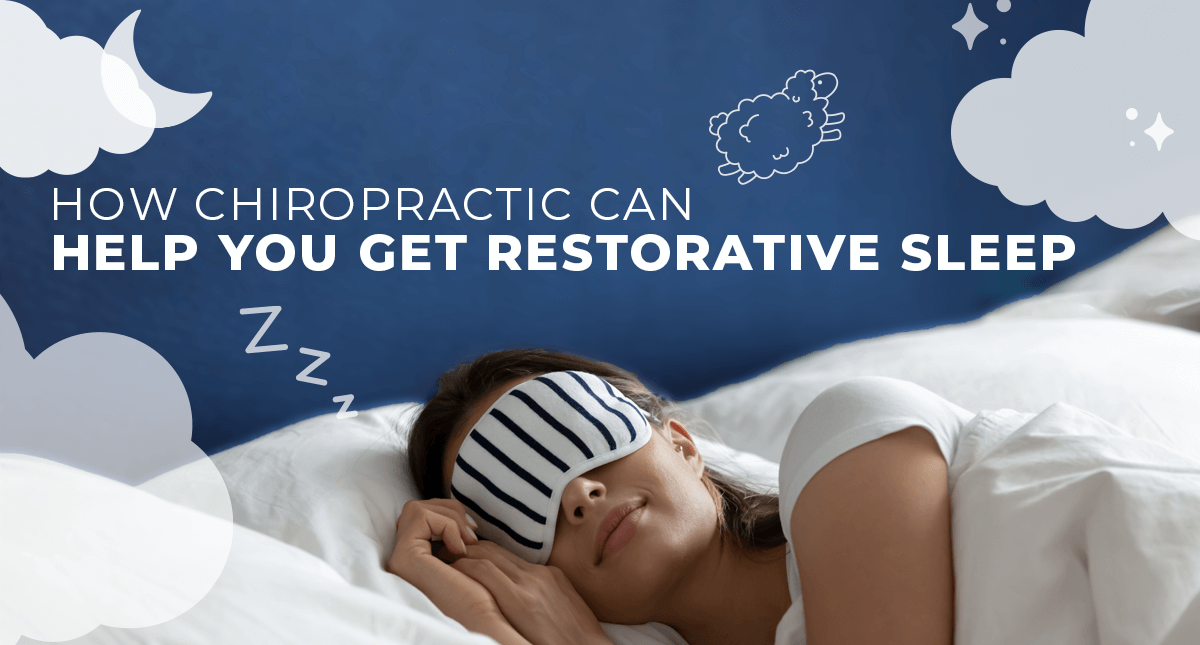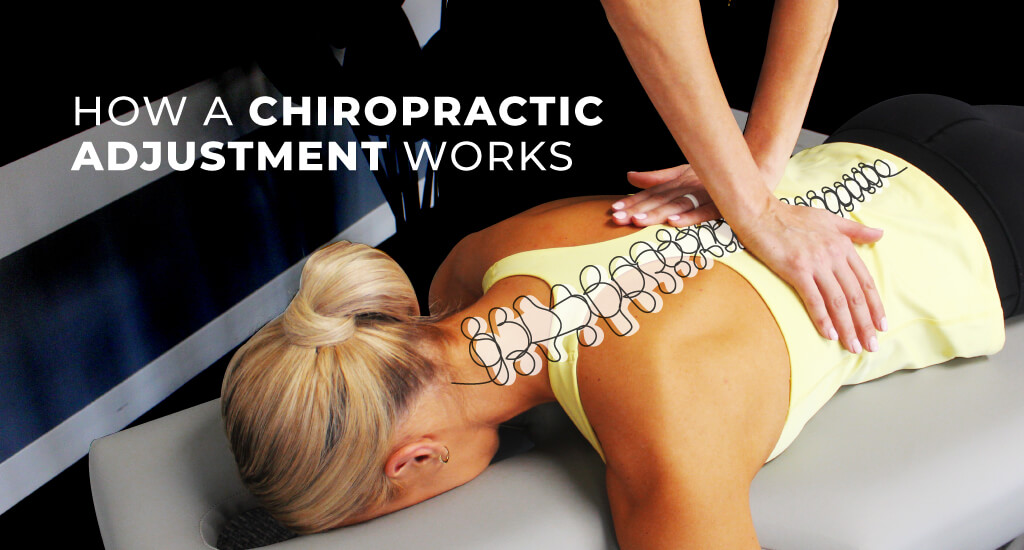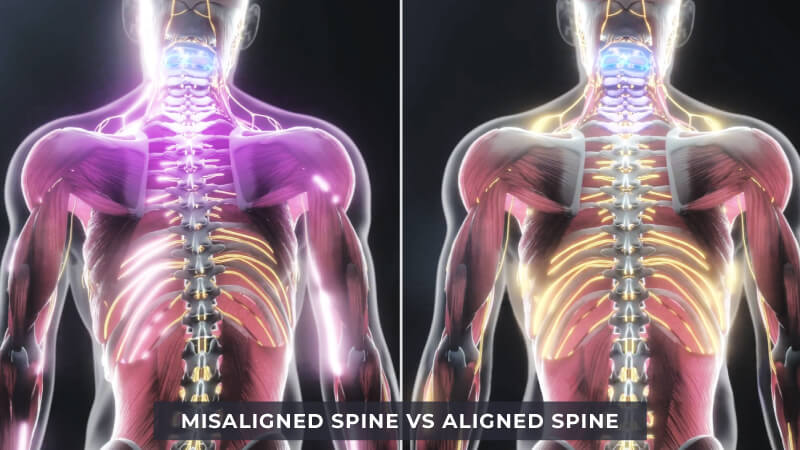
How Chiropractic Can Help You Get Restorative Sleep
Chiropractic care can help you get better sleep by relieving pain – especially neck pain, shoulder pain and back pain, which are common barriers to a good nights sleep.

Every year, one in four Americans visit a Doctor of Chiropractic to address their back pain, neck pain, knee pain or other joint pain. That’s twice as often as they did just 15 years ago. Why? More people are asking how a chiropractic adjustment works and getting satisfying answers.
The National Library of Medicine has been publishing clinical trials that demonstrate the benefits of chiropractic care (both immediate and long term) for years — so it’s no surprise that a Gallup survey found 94% of chiropractic care recipients experienced pain reduction.
Every day 1 million chiropractic adjustments are performed to help Americans of all ages enjoy pain relief, improved function and greater mobility. Many of them feel more at ease scheduling their first adjustment once they understand how a chiropractic adjustment works.
Chiropractic means “done by hand” in Greek. It is with their hands that Doctors of Chiropractic perform an adjustment — a high velocity, low amplitude thrust to your misaligned spinal joint or vertebra — relieving pressure on your nerves to restore motion, function, flexibility and balance.
Simply put, they unlock your locked joint.
When you suffer an injury, whether sudden or repetitive, your sophisticated neuro-musculoskeletal system’s postural and structural muscles will lock down your joint. Eventually, this lock down begins to affect nearby joints, which of course prevents you from enjoying full and free motion.
To demonstrate this phenomenon, try walking around without bending one of your knees. You’ll soon feel how your whole-body movement changes to compensate for one single locked joint. That’s what happens when a spinal vertebra is locked down — it spreads pain and dysfunction to far reaching regions of your body.
Your Doctor of Chiropractic will identify the misaligned region and deliver a quick and gentle, yet highly targeted adjustment, enabling your joint to move through its full range. Adjustments can also break down scar tissue in joint capsules and surrounding soft tissue, allowing even more fluid motion.
Gently and gradually these gentle thrusts help realign each vertebra to decrease your:
Sometimes these thrusts are accompanied by a popping sound which is simply a joint cavitation — a pressure change in the joint capsule that releases nitrogen gas. Joint pressure release often brings an immediate feeling of pain relief while improving spinal movement and overall mobility in the area — until your next misalignment occurs.
That’s why the highest levels of function require consistent maintenance visits — just like alignments and oil changes on your car. Treat your body like a Porsche — you deserve it!
A properly aligned spine enables your joints, vertebrae, muscles and organs to function optimally. While a single gentle alignment can provide pain relief, it can’t restore your entire musculoskeletal system in the long term. Achieving lasting results can require multiple adjustments. How many and over what period depends on the type and severity of your misalignment, your age, and your lifestyle.
Your skeleton is made up of bones held together by ligaments and tendons that are moved by muscles which receive signals from your brain.
Every fall or injury you’ve sustained can contribute to altered alignment of your spine, which over time negatively affects posture. Poor posture places pressure on your nerves, causing pain and tension, and even disrupting the release of critical biochemical signals.
For most patients who complete their care plan, the benefits of chiropractic care fall into these three categories:
If you look in the mirror you may discover that your head is tilted to one side, one of your shoulders is higher, or one leg slightly shorter. These are all subtle indicators of common misalignments.
Targeted chiropractic adjustments can help restore the alignment of your spine, shoulders, hips, knees and other joints to help slow down and even prevent premature degeneration and arthritis that years of poor posture can cause.
As your spine gradually becomes misaligned from falls, traumas, or just your daily habits, it brings the spinal cord with it. So, you can’t misalign your spine without affecting your spinal cord. Postural misalignments in the spinal cord affect various areas of your body.

A graphic example is the upper neck which can become misaligned during birth, which is why newborns often sleep with their heads tilted to one side more than the other. Their upper neck misalignment causes pressure on the C1/C2 spinal vertebrae, and the nerves that enter and exit at C1/C2 travel to the eyes, ears, nose and throat.
Just like a taut and twisted garden hose changes the flow of water, a dysfunctional nerve can change the flow of neurotransmitter (messages) from your brain to your body and vice-versa. If it’s been dysfunctional for a long time, it will also take time to help the nerve return to normal function.
Many chiropractic patients experience a soothing mood or energy lift after an adjustment at some point in their care. And the majority say they sleep better after an adjustment. What causes these sensations?
Biochemical responses are stimulated when your DC re-aligns the vertebrae and relieves pressure from nerves in your spinal cord which were depressing your endocrine (hormone) system functions.
Once that pressure is released you can experience an increase in natural endorphins or relaxants (depending on what the body needs at that moment) for relaxation, tranquility and wellness.
The demand for chiropractic care after sports injuries and whiplash has been high for decades. Today, however, these are the most common conditions that are treated with the help of chiropractic adjustments:
When enjoyed regularly, the benefits of chiropractic care also include reduced stress on your nervous system to improve your immunity and sleep hygiene.
After a thorough assessment, which may include an x-ray, your DC will craft a care plan for your unique misalignments and pain type.
Depending on your condition and its duration you’ll receive one of these adjustment types: Direct Thrust Technique, Spinal Mobilization, Articulatory Technique, Myofascial Release, Muscle Energy Technique, Functional Technique, Flexion-Distraction, Gonstead, Activator or Thompson methods.
Your personalized protocol will be comprised of gentle targeted adjustments in one or more of these forms:
After getting adjusted, you’ll need to reinforce the effect of your DC’s gentle realignment techniques with in-clinic active therapies. Your doctor may also recommend at-home exercises.
Doing these prescribed exercises daily can enhance your flexibility, mobility and posture — turning them into wellness habits you don’t even have to think about. Your DC will also teach you new ways of sitting, standing and moving to gradually encourage the kind of spine alignment you need to live the lifestyle you want.
Many patients don’t wait until they develop a misalignment serious enough to induce pain — they choose preventative care to help maintain their neuro-musculoskeletal wellness and give their DC an opportunity to identify potential dysfunctions before they cause pain and lifestyle disruption. Of course, that requires finding a reputable DC that’s right for you.
Check in with your nearest Chiro One doc at one of our welcoming open-plan clinics across the country. They’ll perform a thorough exam to investigate the root cause of your pain, then personalize your care plan — a combination of gentle chiropractic adjustments and active therapies to get you feeling better longer.
Find a Chiro One doctor near you
Help someone you love sleep more comfortably. Refer a friend or family member and they’ll receive a complimentary consultation – and you’ll receive a thank you gift from Chiro One.
Receive a thank you gift for referring them here.
Subscribe and get news, articles & offers sent right to your inbox each month.
"*" indicates required fields
By subscribing you are agreeing to the Terms and Conditions and Privacy Policy.